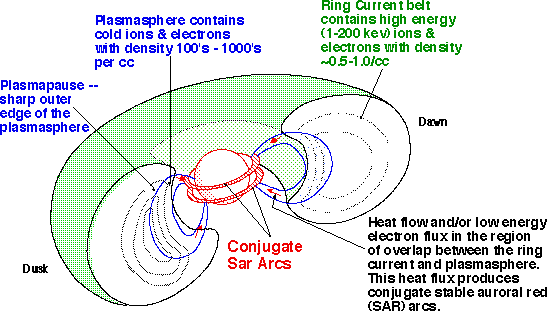Intro. & Overview
|
Welcome. We, the Boston University Imaging Science Team, use various imaging techniques to study a wide range of interesting atmospheric phenomena on the Earth and on other planets in our solar system. We call ourselves the Imaging Science Laboratory (ISL) because we actually do take and process a lot of images. These deal with optical features in the Earth's upper atmosphere, and in the atmospheres of planets, moons, and comets. But we also do modeling studies and many data analysis projects---and we portray our results using computer-generated images---and so "Imaging Science" has a very broad meaning to us. We employ all-sky imagers and spectrographs for our terrestrial atmospheric studies and two small telescopes (4" and 20") for our planetary work. Our instruments are designed and built here at BU and stationed as nearby as Westford, MA as well as in many other countries. We image, for example, the aurora: Most commonly known as the northern or southern lights, these wispy, changing bands of light can be seen from dark locations at high latitudes in both hemispheres. They are caused by electrically-charged ions and electrons in the magnetosphere that travel along magnetic field lines and collide with neutral particles in our atmosphere. When these particles release their new energy in the form of photons, we see this as light. If the emission levels are high enough, our eyes can perceive the typical green and red aurora. Our main auroral science is actually conducted at sub-auroral latitudes. Stable Auroral Red (SAR) arcs are less widely known, because unlike high latitude aurora, we cannot see a SAR arc with the naked eye. These structures are more stable in both time and shape than rayed or diffuse aurora and are only observed at 6300 Å, an emission line of oxygen. Our specialty is taking pictures of things you cannot see. |
| But that's not all. We also study gravity
waves in the mesosphere and plasma instabilities in the equatorial ionosphere.
Beyond our own atmosphere, we image the moon's tenuous exosphere, Io's extended atmosphere, sodium around comets, and the escaping sodium atmosphere of Mercury. We also study the Earth's ionosphere and the ionosphere of other planets using radio-science methods, as well as in-situ probes on spacecraft. Finally, a major activity is modeling---we develop sophisticated numerical simulation codes to probe the physical and chemical processes that control atmospheric systems. It's all too much for one page. So, please, to learn more about what we do, browse around. The links are at the top.
|


